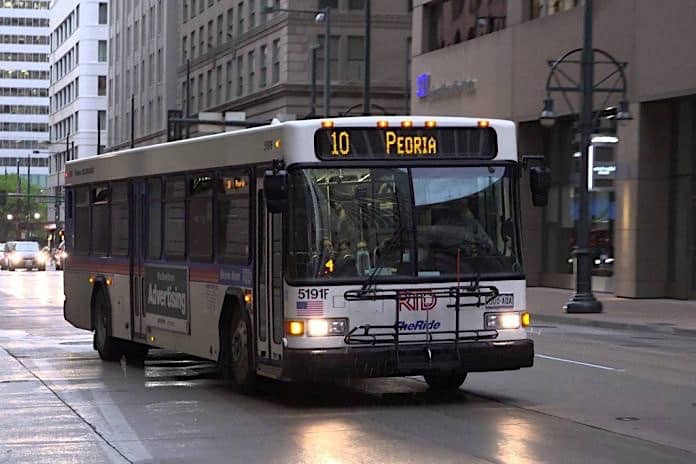Even as federal policy makers push for more school choice options, a study released this month claims transportation to these schools remain the biggest obstacle.
The Center for Reinventing Public Education published its latest research on the relationship between school choice and transportation, which can be nonexistent at worst or patchwork at best for low-income students.
“Can Public Transportation Improve Students’ Access to Denver’s Best Schools of Choice?” cites a 2014 CPRE survey that showcased a quarter of parents challenged by getting their children to and from school while living in “high-choice” cities. Authors Betheny Gross and Patrick Denice cite another recent survey by HopSkipDrive, a car shuttle service for children.
The survey shows 43 percent of parents said they spend more than five hours a week driving their kids to and from school. Meanwhile, 40 percent said that driving their kids interferes with their work schedule, at least weekly.
Their study specifically looked at Denver Public Schools, where 80 percent of students entering kindergarten, sixth grade and ninth grade submit applications though the unified enrollment system that allows them to select up to five district of charter schools they’d like to attend. They are then placed via a lottery based on student preferences and school availability.
Gross and Denice sought to answer four main questions:
1. How well do Denver’s existing public transit routes connect students to the schools they currently attend?
2. How well do Denver’s public transit routes connect students to the city’s highest-rated schools?
3. Do differences in the viability of public transit options vary systematically by the race or ethnicity of students or the economic background of their families?
4. If the public transit system isn’t a viable solution, what could be?
The research concluded that Denver must seek other transportation solutions beyond transit to deliver “reasonable” access to high-performing schools for all students.
“To provide all students with the best opportunities for learning, Denver, and other cities as well, must make strategic investments in improving the distribution of quality schools and will likely have to consider creative solutions like building enrollment partnerships with neighboring school districts, developing micro schools, or providing more students with virtual access to classrooms in the city’s best schools,” the researchers recommended.
While parents prefer to send their kids to high-performing schools, they don’t want them traveling long distances to do so, research indicates. The school district utilizes free local transit fares to transport 40,000 eligible students from their homes in one part of the city to high-performing choice schools. But only a little more than half of those students elect to ride transit. A previous CPRE study found that 64 percent of parents drive their children to school.
The school district also offers “select” school bus service to a small number of charter schools and operates the “Success Express,” a circular school bus shuttle service for two areas of the city with predominantly low-income households to transport students to both traditional and charter schools. Gross and Denice found that families of color and white families reside in different parts of the city, with the former mostly concentrated in the Northeast and west of Interstate 25, which they point out are two of the most difficult areas to access. The same pattern holds for income.
Community leaders have discussed the possibility of extending free transit passes to all students, no matter where they live, to improve access the city’s highest-ranking schools, according to Gross and Denice. Their data analysis of school access found that most students can “reasonably” use public transit to get to their current school, but public transit won’t necessarily get them to the city’s highest-performing schools.
According an analysis of residential and demographic info for 8,000 students, on average half can reach their current school in just over 22 minutes. Forty-three percent reached school within 15 minutes and 74 percent reached school within a half hour. But only 58 percent of students taking public transit can get to one of the district’s top-rated schools within 30 minutes.
Gross and Denice also found that 69 percent of white students live within 30 minutes of these best schools, while 63 percent of black students and 53 percent of Latino students live the same distance from these schools.
The researchers added that a similar gap exists based on family income, as 55 percent of students eligible for free or reduced lunch live within a half hour away compared to 66 percent of ineligible students.
Public transit options are also limited based on transitioning students from the lowest-performing schools to the highest, as only 47 percent of these students could get to the new school within 30 minutes.
Gross and Denice also found that half of white students have two or more top-rated schools to choose from within a 30-minute transit ride, but only 37 percent of black and 32 percent of Hispanic students can say the same.















